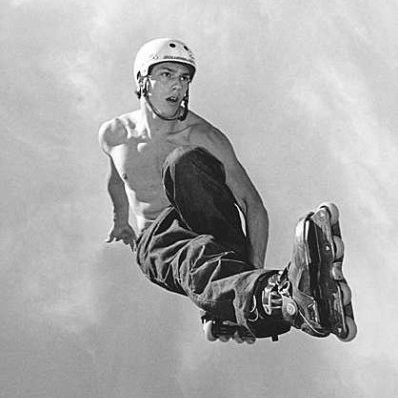For most skating a high boot is used, which provides more ankle support and is easier to skate in, particularly for beginners. Speed skaters often use a carbon fiber boot which provides greater support with a lower cut allowing more ankle flexion. For recreational skating a soft boot is used for greater comfort, but many other disciplines prefer a harder boot, either to protect the foot against impact or for better control of the skate. The boot may also contain shock absorbent padding for comfort. Downhill skaters often use boots that are heat-molded to the shape of the foot, with a foam liner.
Most aggressive skates use a hard boot or a hard/soft boot for increased support.
Frame
Typical recreational skates use frames built out of high-grade polyurethane (plastic). Low-end department or toy store skate frames may be composed of other types of plastic. Speed skate frames are usually built out of carbon fiber or extruded aluminum (more expensive but more solid), magnesium, or even pressed aluminium, which is then folded into a frame (cheaper but less sturdy).
Carbon fiber frames are expensive but generally more flexible, making for a smoother ride at the expense of worse power transfer between the leg and the wheels. In general, carbon fiber frames weigh about 160–180 grams. Recently, high-end carbon fiber frames with a monocoque construction have been introduced. They offer the same level of stiffness as aluminum frames while weighing only around 130g. Aluminum can weigh from 170 to 240 grams. Frame length ranges from 2 wheel framed freestyle wheels (used in aggressive skating) to around 230 mm for short-framed four wheel skates (used in most inline designs), up to about 325 mm for a five-wheel racing frame.
Axles, bearings and spacers
Ball bearings allow the wheels to rotate freely and smoothly. Bearings are usually rated on the ABEC scale, a measure of the manufactured precision tolerance, ranging from 1 (worst) to 9 (best) in odd numbers. The ABEC standards were originally intended for high-speed machinery, not skating applications, and do not account for the quality of steel used, which is very important for how long bearings last. While higher rated bearings are generally better in overall quality, whether they automatically translate to more speed is questionable. Since at least 2007, Rollerblade brand amongst others have begun using their own rating system. For instance, Rollerblade brand is currently using a SG1 to SG9 rating system, whereas TwinCam brand is using its own “ILQ” (InLine Qualified) rating system and Bones brand is using its own “Skate Rated” rating system.







